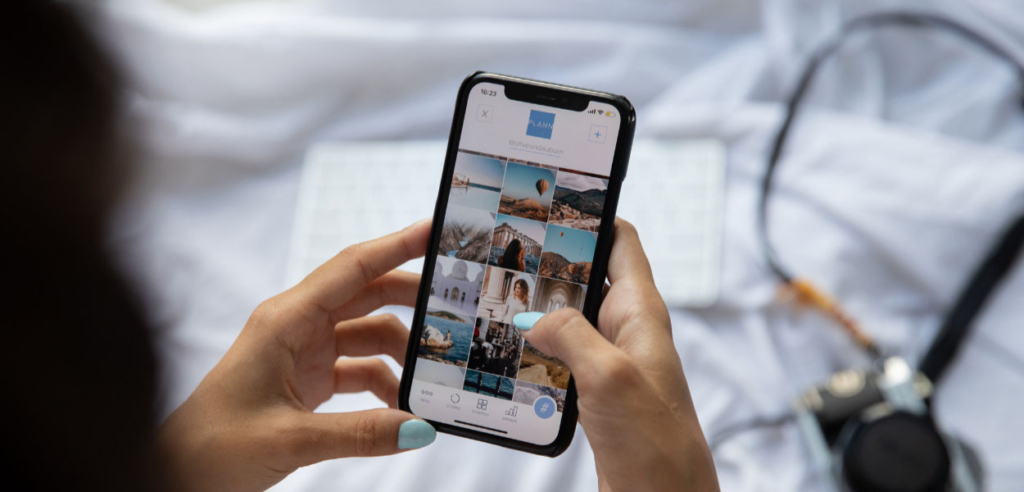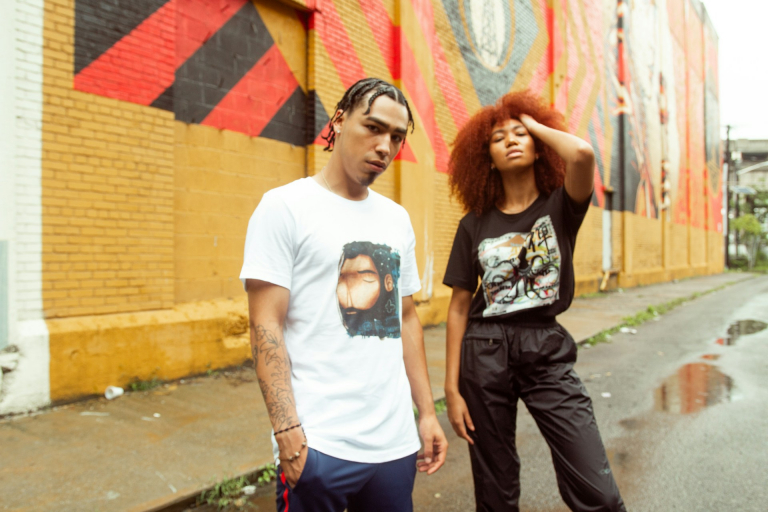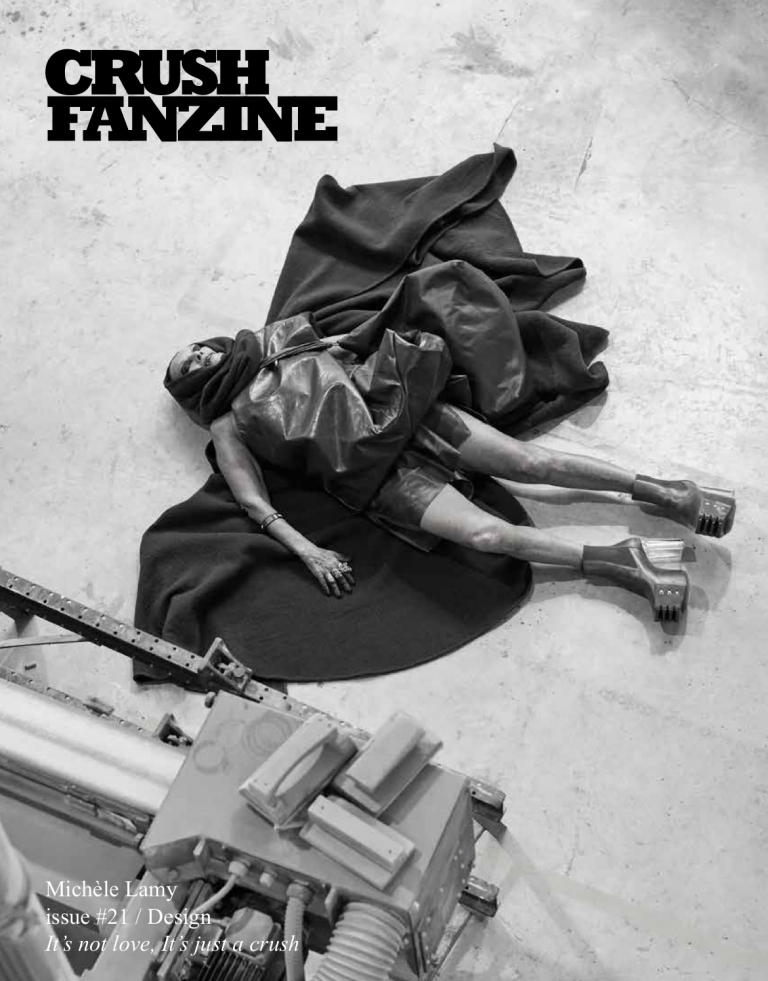Influencers Words are important. We use them to communicate with others; to describe and point to what surrounds us. Hence, the history of words is also the history of our surroundings. The progressive transformation of a word’s meaning reflects the progressive transformation of the context in which we find ourselves. That’s precisely the reason why the history of the expression “fashion influencer” is so interesting.
Since the mid-1600s, “influencer” has generally been used to refer to an entity capable of changing the beliefs of others. That is, until the end of 2015, when Google searches for the word began increasing exponentially.
Today, it has become practically impossible to separate the concept from its ties to social media. Indeed, in 2019, Merriam Webster’s dictionary saw the term’s new definition written on its pages for the first time. An influencer now additionally refers to “a person who is able to generate interest in something (a product) by posting about it on social media”.
Such a shift clearly reflects the recent rise of a new profession, intrinsically linked to the rise of social networks. And as with all professions, there are many categories of influencers. The most prominent might be that of fashion influencers.
But how exactly did this all come about? And what does it change, if anything?
From Queen Charlotte to Chiara Ferragni
The rationale behind influencer marketing is that people want to hear from other people, not corporations.
A study by Baer and Lemin found that 83% of Americans are substantially influenced by friend recommendations when making purchases. Influencers thus play the role of trustable friends with reliable recommendations to make. And though such a marketing tool might seem like a recent development, it has been in existence for centuries.
Influencing Before Social Media
Throughout time, there have been a number of people worthy of the title of “influencer”. Of course, the majority altered the consumer behaviour of the masses through mediums which preceded social media. Some of these figures are worthy of mention, precisely because they help illustrate the history of influencing.
In 1760, Josiah Wedgwood designed a tea set for Queen Charlotte of England. He made sure to let it be known that he was the “Potter to her Majesty”. Evidently, the Queen’s influence helped Wedgewood become a luxury staple, a reputation the brand still enjoys today.
A little less than two centuries later, during the 1920s, designer Coco Chanel established herself as a fashion icon. Her innovative pieces led her to become one of the 100 most influential people of the 20th century according to Time Magazine. She is still known as one of the most transformative influences of fashion.
Then, in 1984, Nike sold $70 million worth of Air Jordans, the brand’s collaboration with basketball star Michael Jordan. Of course, it was the athlete’s fame and influence which made this possible.
Four years later, Sex and the City aired for the first time. The show’s protagonist, Carrie Bradshaw, played by Sarah Jessica Parker, quickly established herself as a fashion trailblazer. The character popularized the iconic shoe brand Manolo Blahnik, as well as the emblematic Fendi Baguette, amongst others.
Later, in the early 2000s, Paris Hilton rose to fame as the ultimate American “it” girl. The socialite brought to spotlight a number of trends which, without her, might have ended before they had a chance to start. She famously popularized the Juicy Couture track suit, which eventually became a symbol of the decade.
Influencers As We Know Them Today
The previously mentioned figures were indeed influencers in a certain way. Nevertheless, the concept as we know it today only came about with the proliferation of the internet. More specifically, fashion bloggers were an important precursor of the phenomenon. They inspired people to dress the way they dressed, to buy the pieces they bought.
Yet proper influencers didn’t really make an appearance until Instagram launched in 2010. As certain people started getting more and more followers, brands took notice of a tool they could make use of. And paying instagrammers to promote products worked out so well that it became the billion dollar business it is today. A number of influencers have surely made it, and made it big. Chiara Ferragni, for example, started her blog, “The Blonde Salad”, in 2009. She currently has more than 24 million followers on Instagram and a clothing brand. In 2015, she was listed in Forbes’ 30 Under 30.
It is thus clear that influencers didn’t spring up out of the blue. However, the real scope of their influence (pun intended) is yet to be discovered. Is it all bigger than just promoting products? What does the emergence of influencers mean for the fashion industry? And for society as whole?
The Effects of Influencer Culture
Influencers have become such a big phenomenon that they are now split into endless categories.
They can be differentiated by their follower count. There are nanoinfluencers, microinfluencers, macroinfluencers and megainfluencers. Each is particularly useful for a specific type of marketing strategy. And it doesn’t end there. Different influencers target different audiences. Hence, their focus is becoming increasingly more niche. Some concentrate on fashion, others or beauty, others on literature and even cleaning.
It’s thus no wonder that influencers are taking over the world, quite literally. And it’s fashion influencers in particular who can illustrate the change influencing is capable of bringing about. They have completely transformed the fashion industry, in multiple ways.
The Democratising Effect of Fashion Influencers
Before influencers, fashion was for the elites. It was for those who had the money to buy pieces fresh off the runway or worked for magazines. Then, around 2006, fashion bloggers came into the scene. They brought fashion to the masses through pictures of runway show attendees. Street style took on the importance it still holds today.
And the rise of the influencer accelerated said phenomenon. Fashion influencers brought the Fashion Week experience to the average person. Pictures of models as they walked down the runway became commonplace on social platforms. This completely changed the way people engage with fashion. It democratized it, bringing it down from the pedestal it used to rest on.
Fashion Influencers As Retailers
Spending hours browsing for a sweater on a retailer’s website is no longer appealing to the contemporary consumer. And why do it if you already have access to options you know you will like?
Indeed, influencers have become the new catalogue of sorts. One can even shop directly from instagram creators. They are slowly but surely replacing traditional retailers. Fashion influencers are revolutionizing the way we shop for clothes.
The Push Towards Sustainability
The word sustainability is in everyone’s mouth lately. In the fashion industry specifically, there’s a big push towards environmentally-friendly practices. No one wants to be left behind, to the point where greenwashing has become common practice amongst apparel brands. Influencers are not exempt from this. More and more of them are turning their focus to sustainable brands and ways of dressing. And influencers, well, have influence. Them shining a light onto the importance of sustainability means progress. It makes people want to buy from sustainable brands too. Thus, it also makes brands want to be sustainable.
All these positive effects paint a picture of fashion influencers that is only partially true. The reality is a little grimmer, as usual. After all, progress in one field always means regression in another.
The Dark Side of It All
A Culture of Inauthenticy
To influence is to affect, to sway, to transform. To influence someone is to move their opinions away from authenticity. In reality, though, our opinions are all naturally shaped by the influence of others – of our families, friends and teachers. But the contemporary pervasiveness of social networks in our lives has taken things to another level. Anyone with a social media presence is constantly bombarded with the opinions of influencers. Their follower count gives them a sort of legitimacy, making them all the more persuasive.
And so, before we know it, we find ourselves buying this or that product because so and so approved it. We unconsciously let go of our own opinions to replace them with those of the people we follow. Such an effect seems especially disturbing when applied to the field of fashion.
We no longer wear what we wear because we – ourselves – find it to be visually appealing. We wear it because we saw a certain influencer wear it. Yes, magazines have been influencing our fashion choices for years. But they have never reached as many people as influencers do. Their reach is so wide that the culture of inauthenticy that they incite is becoming almost universal.
It’s even possible that influencers themselves are inauthentic. Indeed, some are extremelly selective with the brands they choose to promote. Nevertheless, the very presence of financial motivation subconsciously modifies what they believe to be an authentic choice.
The danger in this is that we all eventually become a mass of indistinguishable beings lacking any individuality. There is value in individuality. And fashion influencers are endangering it.
Cancel Culture
Cancel Culture has already been relentlessly criticized for both hindering free speech and being rather ineffective at holding people accountable. There is no point in further denouncing it. What is relevant, however, is to point out how vulnerable influencers are to it.
As was previously mentioned, influencers play the role of reliable friends who make recommendations to their audiences. Therefore, their affiliations with brands are not seen as professional relationships, but rather personal associations. This means that when influencers accidentally associate with a morally dubious brand, they often take all the blame for it.
Associating with the wrong brands means bearing the responsibility for them, which puts influencers in an extremely vulnerable position. This can have awfully negative effects on their mental health. Moreover, the constant threat of being cancelled forces them to live in a perpetual state of financial instability.
What the Future Might Hold
It’s clear that influencers have brought a revolution to not only the fashion industry, but society as a whole. Their existence has as many negative effects as it has positive ones. Hence, it’s difficult to determine what the final outcome will be.
For the time being, however, it might be beneficial to take advantage of their change-inducing abilities. They could help us overcome the issues that currently threaten the integrity of various populations.
Did you like this article? Check out why social media can be a game-changer for your brand!






